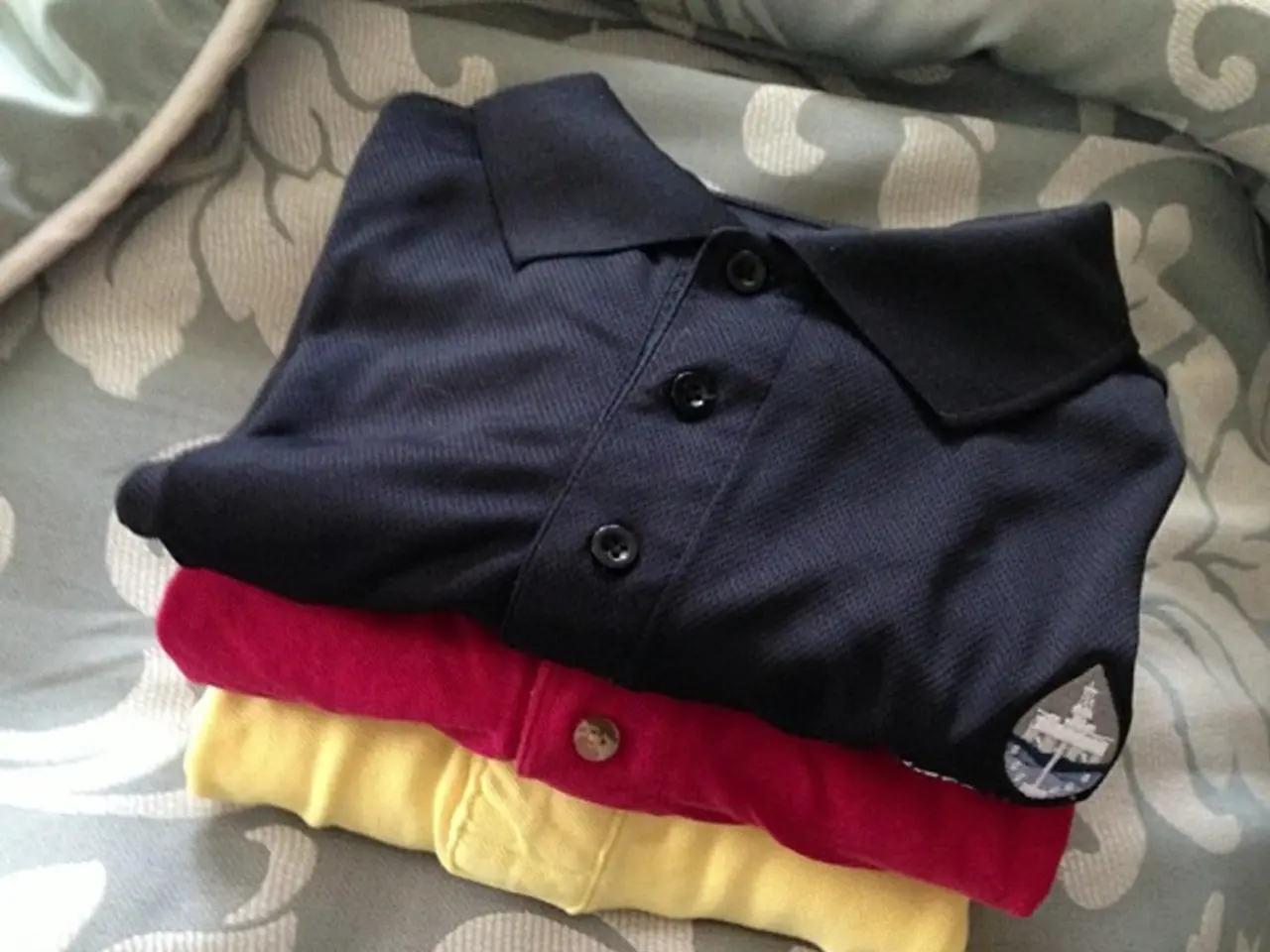Guide for Outsourcing Clothing Production: Weighing Benefits and Drawbacks for Small-Scale Fashion Enterprises
In the dynamic world of fashion, outsourcing manufacturing to overseas companies has become a common practice for many brands. However, before making this decision, it is essential to consider several key factors to ensure quality, scalability, and alignment with brand values.
**1. Define Your Requirements Clearly** Start by specifying critical product attributes such as fabric qualities, design complexity, and sustainability goals. This sets a clear baseline for evaluating manufacturers’ capabilities.
**2. Evaluate Production Capacity and Scalability** Choose manufacturers with sufficient production capacity to meet your initial order and the potential to scale quickly as demand grows. Confirm if they accept small runs and mixed orders in various colors and sizes to maintain flexibility.
**3. Assess Quality Control and Product Consistency** Consistency in quality is vital. Look for manufacturers with strict quality control processes ensuring each garment meets your standards, which helps build consumer trust and brand reputation.
**4. Verify Certifications and Compliance** Ensure the manufacturer complies with relevant industry standards and certifications such as ISO 9001, OEKO-TEX, BSCI, or GOTS, especially if your brand emphasizes sustainability or ethical production. For selling in markets like the EU, compliance with product regulations is essential.
**5. Research Legitimacy and Reputation** Vet manufacturers thoroughly by checking their business legitimacy: real contact information, reviews, history of partnerships, and presence at reputable industry trade shows. Avoid suppliers without transparent business credentials to minimize risks.
**6. Consider Sustainability and Ethical Practices** If sustainability is part of your brand ethos, select manufacturers that use recycled materials, reduce emissions, and maintain fair labor conditions. Some regions also offer trade agreement discounts that can benefit your costs while supporting ethical production.
**7. Analyze Costs and Lead Times** Factor in not only the per-unit cost but also the sampling fees, shipping, and overall lead times. Efficient manufacturers can reduce time-to-market, helping you respond promptly to trends.
**8. Communication and Location** Local or closer manufacturers can simplify communication and reduce shipping times and costs. European brands, for example, often source from Italy, Portugal, or Turkey, balancing cost, quality, and proximity.
By systematically assessing manufacturers against these criteria, fashion brands can select partners who not only produce quality garments but also support their long-term business growth and values.
Local and nearshoring manufacturing is becoming more popular due to shorter shipping times and the boost it gives to local economies. The apparel industry must research potential manufacturers, send RFPs, negotiate quotations, develop samples, agree on contracts, manage supply chain, oversee production, implement quality control, plan logistics and shipping, and provide feedback for improvement when outsourcing textile manufacturing.
An ERP solution can simplify the life of clothing manufacturers by providing a consolidated database for supplier management, purchase order management, and production tracking and monitoring. Cost savings, expertise and specialization, focus on core competencies, scalability, access to advanced technology, reduced risk and liability, time savings, global reach, and quick time-to-market are some of the pros of outsourcing manufacturing for small businesses.
Reshoring strategies may be considered due to concerns about supply chain disruptions, geopolitical risks, and the desire for more control. Sustainable and ethical manufacturing techniques are in greater demand as environmental concerns gain importance.
Production processes are becoming more automated as a result of technological improvements, including robotics, 3D printing, and AI-driven pattern creation. On-demand production may spread as e-commerce and customization grow in popularity, requiring manufacturers who can handle small batch orders and short turnaround times.
Building a solid, reliable partnership with an outside manufacturer requires time and can be impeded by frequent changes in manufacturing partners. Outsourcing clothing manufacturing allows fashion companies, especially smaller ones, to concentrate on design, branding, and marketing.
However, outsourcing manufacturing also presents challenges such as quality control concerns, communication and coordination issues, loss of intellectual property, dependency on third parties, reduced flexibility, lead time and shipping delays, risk of communication breakdowns, and hidden costs. Future outsourcing agreements may be more cooperative, involving tight collaboration between brands and manufacturers to innovate, exchange ideas, and create new goods and services collaboratively.
Blockchain technology can improve supply networks' authenticity and transparency, giving manufacturers a competitive advantage. Concerns about fair work standards, sustainability, and social responsibility may arise when outsourcing to nations with lax labour and environmental legislation.
In conclusion, when considering outsourcing manufacturing, it is crucial to consider all relevant elements, including cost analysis, production volume and expertise, quality standards, location, communication and time zones, ethical and environmental factors, production flexibility, reliability and reputation, contractual agreements, risk management and long-term strategy, exit strategy, and best practices for outsourcing manufacturing.
- To ensure the financial viability and alignment with the luxury lifestyle associated with the fashion-and-beauty industry, evaluate manufacturers' pricing and turnaround time as part of your cost analysis.
- In order to maintain a positive brand reputation and strong consumer trust, prioritize manufacturers with efficient quality control processes in both production and delivery for better product consistency.
- To guarantee compliance with industry standards and certifications, evaluate potential manufacturers in terms of their finance, including certificates ensuring ethical and sustainable fashion manufacturing practices.




